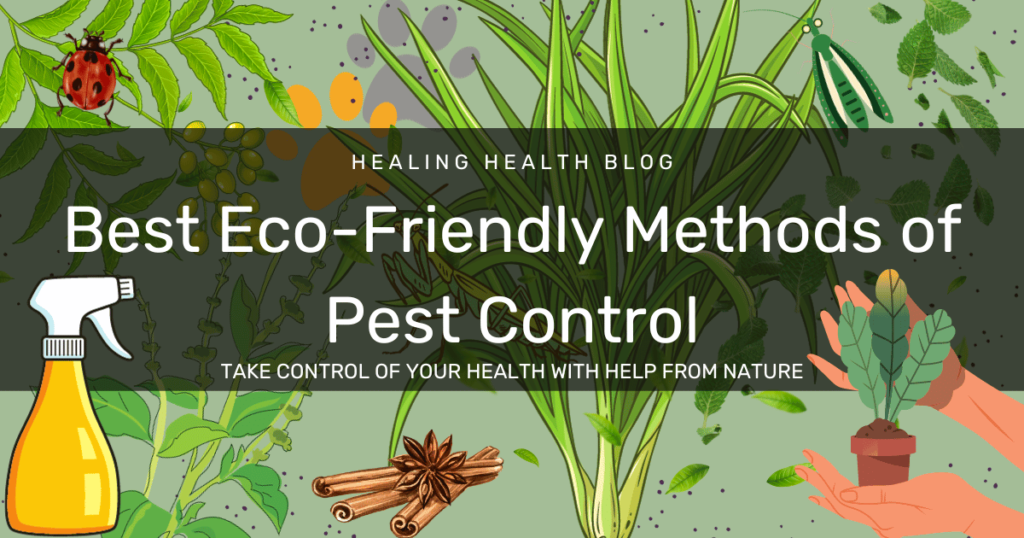
Why Choose Natural Pest Control
Chemical Pesticides can cause long-term effects like cancer, neurological issues, and hormonal imbalances. On the other hand, Eco-Friendly methods of pest control are cheap and safe for you and your pets. But do they work? Absolutely! Simple items like Baking soda, vinegar, and natural spices like cinnamon powder can keep pests away.
- You may enjoy The 13 Best Garden Tools for Beginners.
Jump To The List:
Importance and Benefits of Eco-Friendly Pest Control
Paying close attention to your plants is essential to have the best chance at green thumb success. Regularly examine the leaves and their undersides for signs of yellowing or evidence of leaves being eaten. Pests can quickly destroy your garden, sometimes overnight. But don’t give up! Eco-friendly pest control can keep your garden lush and healthy.

You’ll be proud of your garden and happy to provide your family with natural food.

Here is my list of the best Eco-friendly methods of pest control, carefully selected to ensure your organic home garden success.
As Amazon associates, we earn from qualifying purchases.
1. Neem Oil: Eco-Safe and Natural Pest Solution
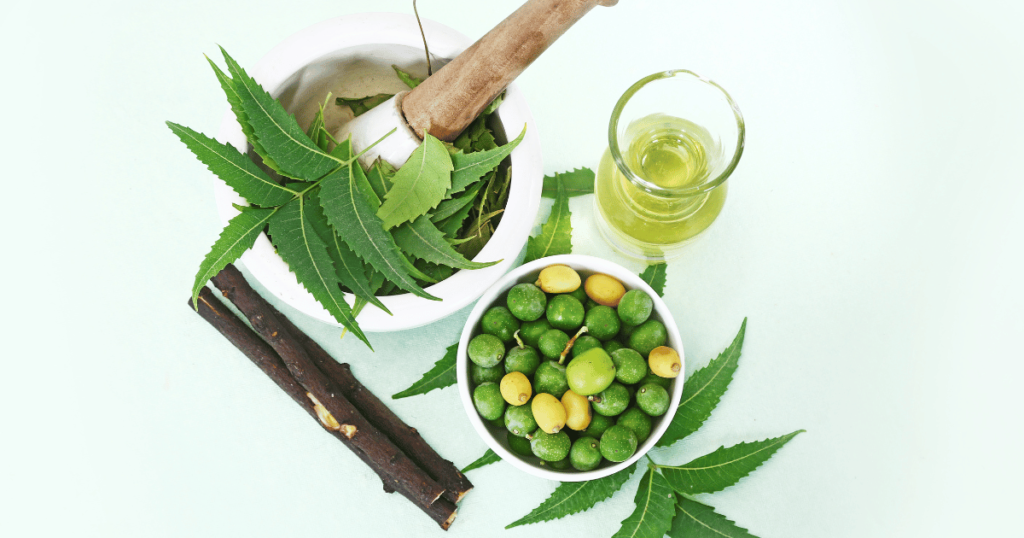
Neem oil is an Eco-safe and natural solution for pest control. Extracted from neem tree seeds, it’s effective against various pests. Safe for humans and pets, it works as a preventive measure and a treatment for infestations. Mix with water and a mild detergent for a spray that controls pests, applying it regularly for prevention or more frequently for active infestations.
For a high-quality option, consider Neem Bliss – Pure Neem Oil.
It’s especially effective against:
- Aphids
- Spider Mites
- Whiteflies
- Mealybugs
- Fungus Gnats
- Fungal Diseases e.g. powdery mildew
2. Diatomaceous Earth: A Natural Pest Controlling Method
Diatomaceous Earth (DE) is composed of fossilized remains of tiny aquatic organisms called diatoms; DE works by absorbing the oils and fats from the insect’s exoskeleton, causing them to dehydrate and die.
Sprinkle a thin layer on dry soil and plants where pests are a problem, focusing on areas like the underside of leaves. Always apply food-grade DE in dry weather, as it loses effectiveness when wet. Remember to reapply it after rain or watering your garden.
For a reliable option, consider HARRIS Diatomaceous Earth Food Grade, 10lb with Powder Duster, which is highly rated for its effectiveness.
It’s especially effective against:
- Ants
- Beetles
- Fleas
- Cockroaches
- Bedbugs
3. Using Pheromones as Sustainable methods of pest control
Pheromones mimic insects’ natural chemicals to communicate, explicitly attracting certain pest species. Pheromone traps often target male insects, disrupting mating cycles and reducing overall pest populations. These traps are handy against pantry pests like Indian meal moths, flour moths, and grain moths.
For effective control of pantry moths like the Indian meal moth, consider using Dr. Killigan’s Premium Pantry Moth Traps
4. Natural Repellent Pouches For Pest Control
These pouches use concentrated essential oils like garlic and peppermint, creating a powerful barrier against pests such as rodents, mice, and squirrels. They are suitable for a wide range of indoor areas and are safe for both pets and humans.
For a safe and natural way to repel pests, consider TSCTBA Pest Control Pouches for effective and long-lasting protection.
5. Physical Barriers & Traps: Eco-Friendly Methods of Pest Control
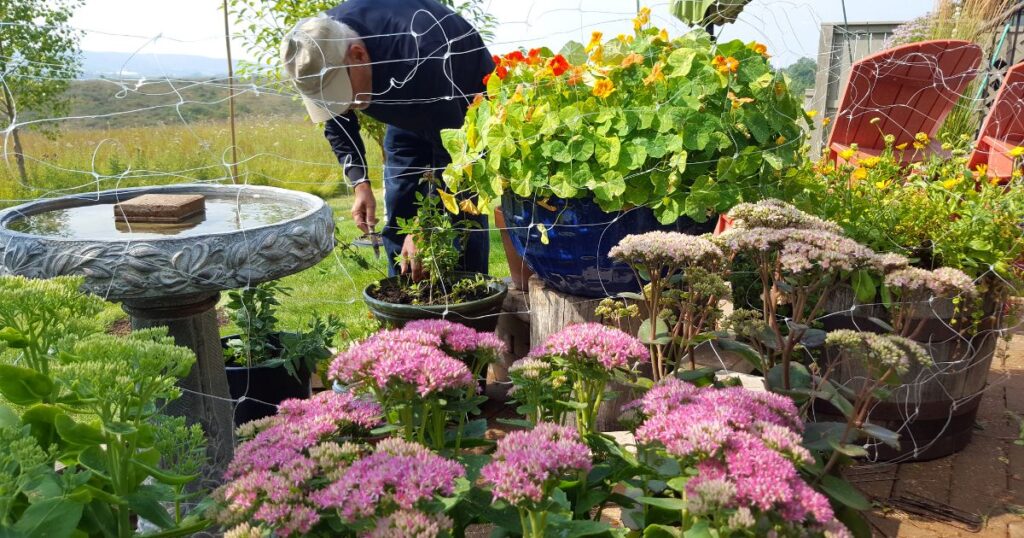
Physical barriers and traps, like netting and sticky boards, are a direct and Eco-friendly approach to pest control. These methods work by blocking pests from entering an area or capturing them on contact. Placing them strategically in pest-prone areas or along their pathways can effectively control their movement and reduce infestations without using harmful chemicals. Use around doors, windows, and plants to prevent insects like flies and spiders from entering.
6. Insecticidal Soap: Eco-Friendly Methods of Pest Control
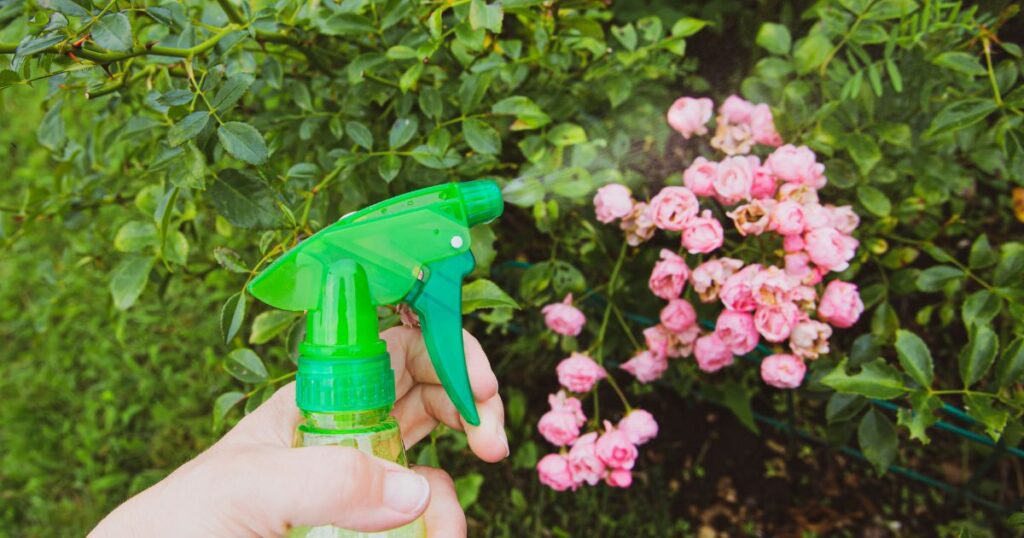
Insecticidal soap is a practical, Eco-friendly method for pest control, especially against soft-bodied insects like aphids, mealybugs, mites, and whiteflies. It works on contact, targeting pests without harming your plants. For organic gardening, insecticidal soap is safe for indoor, outdoor, and greenhouse applications.
For a convenient and ready-to-use option, consider Garden Safe 32 oz. Insecticidal Soap. It is effective for various pests and suitable for multiple plants, including vegetables, fruit trees, and ornamentals.
7. Natural Spices as Repellents: Effective Eco-Friendly Methods of Pest Control
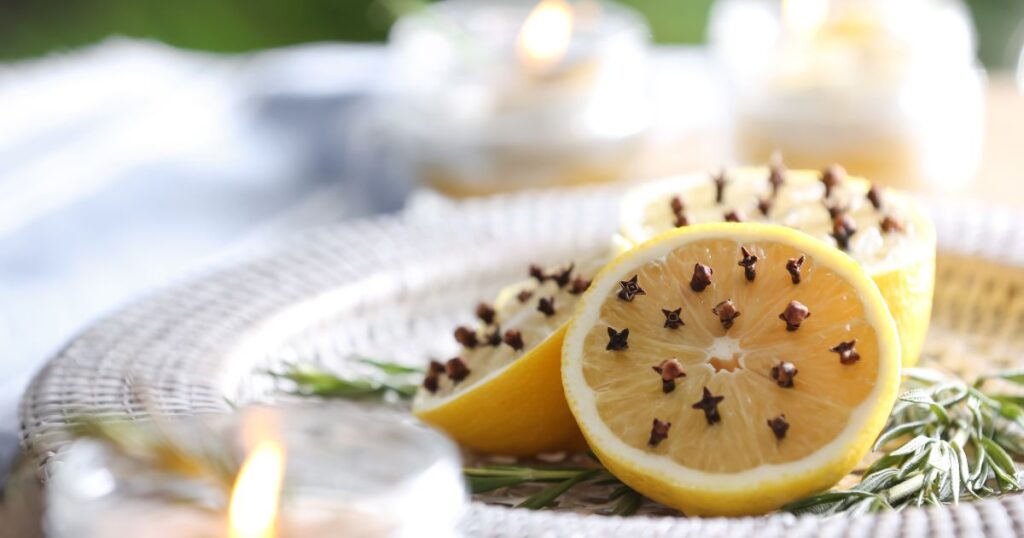
Common household spices can be surprisingly effective as natural pest repellents. Spices like cinnamon, cloves, and garlic are known for their ability to deter various pests due to their strong scents and natural properties.
- Sprinkle ground cinnamon around areas where ants are a problem. It’s excellent for creating a natural barrier they tend to avoid
- Place whole cloves in areas prone to insect activity, like windowsills or pantry shelves, to repel flies and other pests
- Crush garlic cloves and mix with water to create a spray for deterring garden pests like aphids
8. Essential Oils for Pest Control: Eco-Friendly Methods of Pest Control

Essential oils such as peppermint, eucalyptus, rosemary, and lavender are a natural and effective way to control pests. Peppermint oil is an excellent Eco-friendly ant repellent, deterring ants with its strong scent. To use, dilute a few drops of essential oil in water and spray in areas where pests are a problem. These oils keep pests away and add a pleasant fragrance to your home or garden.
9. Eco-Friendly Methods of Pest Control: Vinegar
Explore the versatile uses of vinegar in Eco-friendly pest control. Vinegar, especially apple cider and white vinegar, can effectively deter ants and fruit flies and even treat plant fungus. Mix equal vinegar and water in a spray bottle for a simple pest-repellent solution. Apply directly to affected areas or use as a preventive measure in gardens and indoor spaces.
10. Biological Pest Control: Eco-Friendly Methods of Pest Control
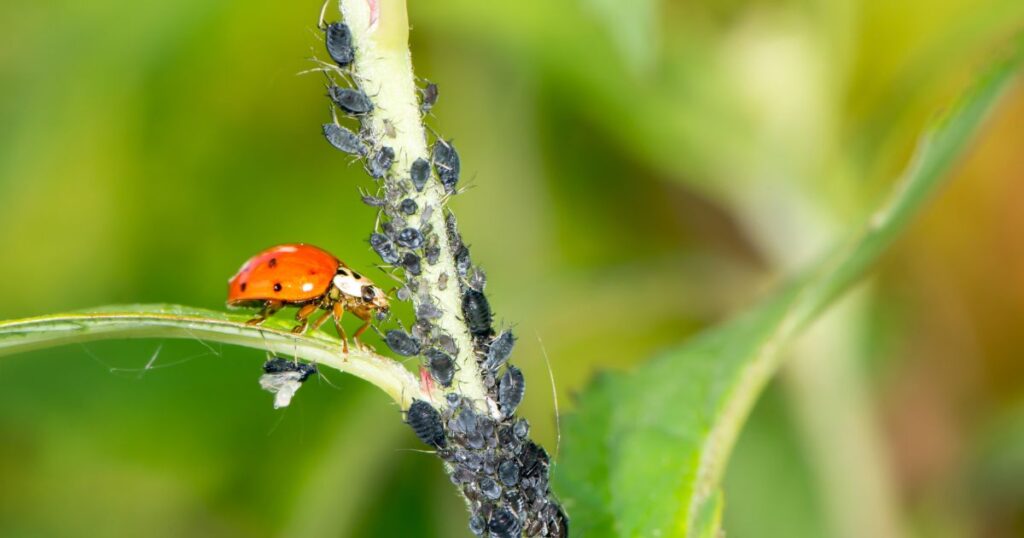
Biological pest control involves using beneficial insects to naturally control pest populations. For example, ladybugs are effective in reducing aphid numbers in gardens. This eco-friendly method helps maintain the natural balance in your garden without harmful chemicals.
For natural pest control, consider 1500 Live Ladybugs from Nature’s Good Guys, a safe and effective way to tackle aphids and other pests
11. Pest-repellent Plant Varieties
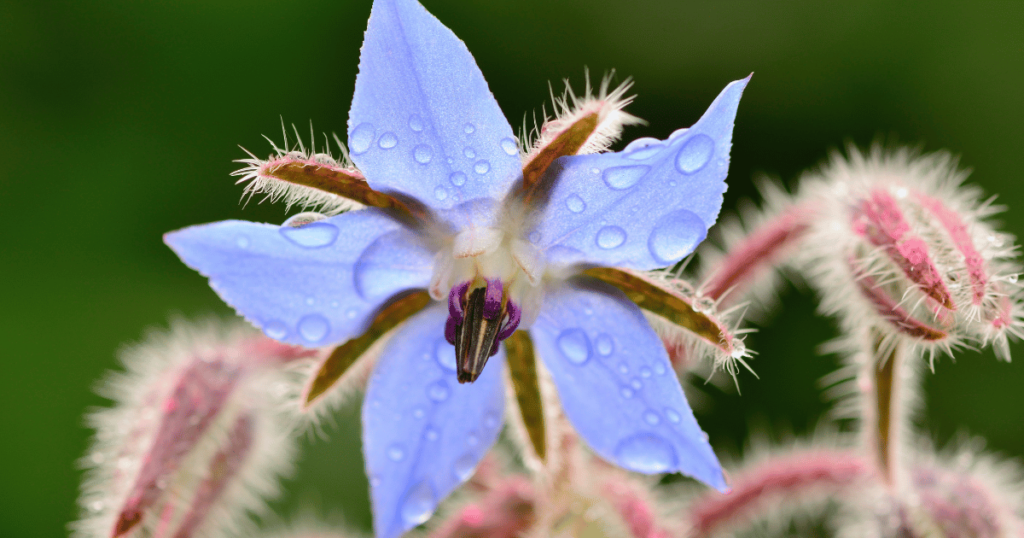
Pest-repellent plants are planted as companion plants. An example is the marigold, which repels nematodes and other garden pests. Other examples are borage, chrysanthemums, and geraniums.
12. Boric Acid as an Eco-Friendly Method of Pest Control
Boric acid is a low-toxicity substance widely used in Eco-friendly pest control. It’s particularly effective against roaches and ants. To use, sprinkle a thin layer of boric acid in areas where pests are frequent, like under sinks or along baseboards. While safer than many chemical pesticides, it should be used cautiously, especially around pets and children.
13. Eco-Friendly Methods of Pest Control: Planting Herbs as Natural Pest Repellents

Many herbs naturally repel pests, making them excellent for Eco-friendly pest control. For instance, basil deters flies and mosquitoes, while mint repels ants and aphids. Additionally, herbs like rosemary and thyme can serve as Eco-friendly slug repellents, keeping these pests away from your plants.
Planting these herbs around your home or garden can help keep pests at bay naturally. With its pleasant aroma, lavender is effective against moths, fleas, and flies. Not only do these herbs offer pest-repellent qualities, but they also add fragrance and greenery to your space.

14. Cedar Granules: Repelling Fleas, Ticks, Ants, and Mosquitoes
Cedar granules, derived from cedar wood or oil, offer an Eco-friendly pest control method that repels various pests, including fleas, ticks, ants, and mosquitoes. To use cedar granules effectively, sprinkle them strategically in areas you want to protect, such as around your home’s perimeter, outdoor seating areas, pet bedding, or gardens.
These granules are safe for pets and humans, making them a natural and chemical-free option for pest management, and an added bonus is the delightful cedar aroma they bring to your surroundings.
Consider Cedarcide Lawn and Home & Garden Cedar Granules. Repels Fleas, Ticks, Ants & Mosquitoes
15. Good Old Baking Soda: Eco-Friendly Methods of Pest Control
Baking soda’s primary function is altering the pH of plant surfaces, making them less inviting for pests and fungal diseases. When mixed with water and mild soap, it forms an effective spray against aphids, whiteflies, and spider mites and prevents fungal growth like powdery mildew.
A sprinkle of baking soda directly on the soil can deter ground pests like ants and slugs. However, caution is advised as excessive use can harm the plants. Baking soda’s effectiveness, affordability, and safety make it popular among gardeners seeking natural pest control solutions.
Eco-Friendly Methods of Pest Control: A Step Towards a Greener Future
Adopting Eco-friendly pest control methods is an efficient step towards sustaining our environment and health. This blog has explored various natural and effective pest control methods, ranging from beneficial insects and herbs to safer alternatives like neem oil and diatomaceous earth. By choosing these methods, we protect our homes and gardens from pests and contribute to a healthier and more balanced ecosystem. We encourage you to implement these Eco-friendly pest control techniques in your daily practices and join the movement toward a greener, more sustainable future.
References:
Costas-Ferreira, C., Durán, R., & Faro, L. R. F. (2022). Toxic Effects of Glyphosate on the Nervous System: A Systematic Review. International journal of molecular sciences, 23(9), 4605. https://doi.org/10.3390/ijms23094605
Campos, E. V., de Oliveira, J. L., Pascoli, M., de Lima, R., & Fraceto, L. F. (2016). Neem Oil and Crop Protection: From Now to the Future. Frontiers in plant science, 7, 1494. https://doi.org/10.3389/fpls.2016.01494
Isman M. B. (2006). Botanical insecticides, deterrents, and repellents in modern agriculture and an increasingly regulated world. Annual review of entomology, 51, 45–66. https://doi.org/10.1146/annurev.ento.51.110104.151146

